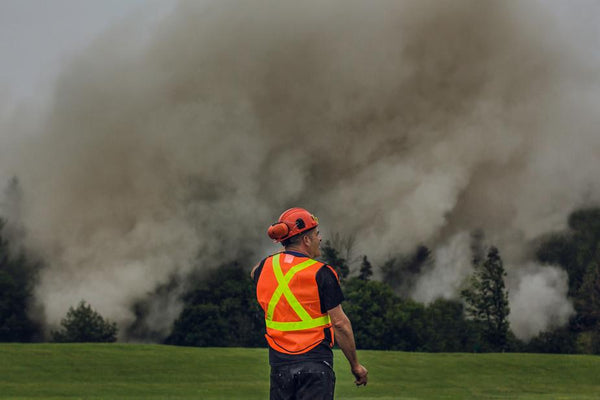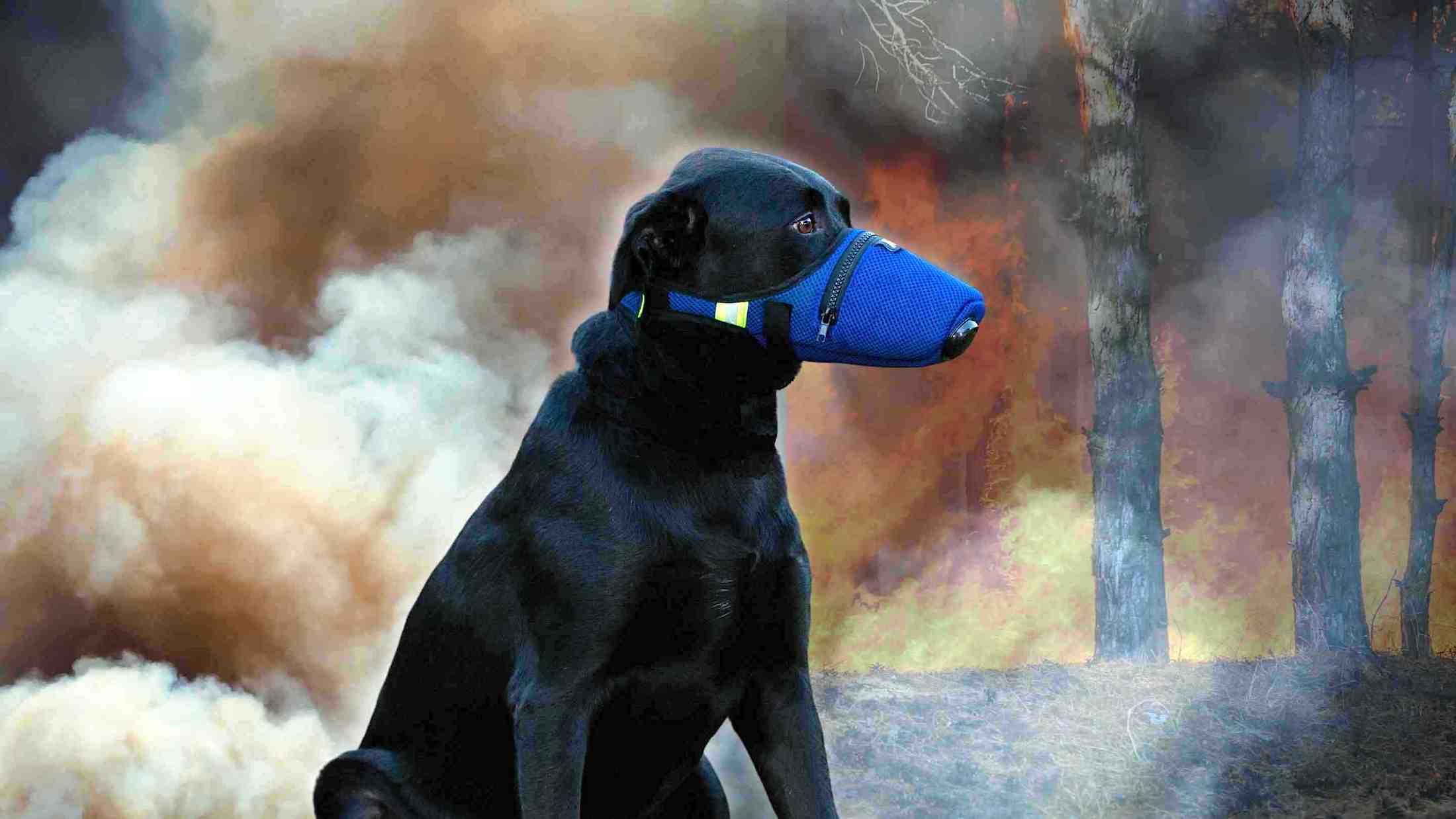As California and the West are falling deeper into drought and, with summer approaching, there is great potential for another severe fire season in 2021.
As a disappointing wet season comes to a close and hope for spring rain fades, conditions are worse now than they were at this time last year in 2020, with exceptional and extreme drought now found throughout the region.
In California, that doesn’t bode well, given that last year’s more moderate rainfall deficits, combined with extreme heat waves, ushered in a record-setting fire year. It brought 5 of the 6 largest fires in modern state history, 10,488 destroyed structures and 33 fatalities. Some 4.2 million acres were torched.

More frequent drought, hotter summers and warmer and drier autumns, tied to climate change, are stacking the deck for large and destructive fires during the heart of the fire season. And this year, a lack of rain in spring could mean fires arrive early in some areas.
In California, ominous signs of the season ahead after a devastating 2020 fire season and a dry autumn, this winter offered a chance to reverse course on mounting rainfall deficits. But despite a significant late-January storm, the 2021 winter and spring months have failed to deliver even normal precipitation, and much of April is forecast to be very dry. In fact, the current water year is now tied for the third driest on record.
“As California got further into the wet season, it became clear that the number of major storms, such as atmospheric rivers, needed to ameliorate the drought were not coming, and drought conditions and impacts across sectors intensified and expanded,” Amanda Sheffield, an expert with the National Integrated Drought Information System, said in an email.
For the last two wet seasons, a persistent ridge of high pressure in the central and eastern Pacific has diverted most storms out of the state. In Northern California, many of the wettest, forested regions have missed over 20 inches of precipitation in that time period.

Drought deepens across the West, and fire risk follows Large wildfires in the West are driven by a complex relationship between shorter-term weather and longer-term climate variability. The West’s descent into the current severe and widespread drought began in the fall of 2019, when a dry pattern emerged over Oregon, northern California, central Nevada and into parts of Idaho, Utah and Colorado. The hot and dry summer of 2020 quickly followed, which brought devastating fires to California and the Pacific Northwest, and set the stage for Colorado’s biggest wildfire season on record beginning in August and continuing through October.

Combining this longer-term climate signal with expected weather as we move into summer dictates the location of greatest fire risk. Based on low snowpack and early snowmelt already occurring in Arizona and New Mexico, and expected early snowmelt around the Four Corners, the risk for significant wildfires is high in Arizona and New Mexico, and is extending into southern Utah and southern Colorado. That risk moves northward as the summer continues into central Nevada, Utah and western Colorado, but should be reduced to the south if monsoon rains arrive as expected.
As the West Coast enters the summer dry season, the chance for significant fires is high. The probability of getting enough precipitation to mitigate wildfire risk has gone to almost zero as we leave the wet season behind with significant dry anomalies and low snowpack.
Early snowmelt leads to a longer dry season and an increased risk for large wildfires in high elevation forests; shifts in snowmelt timing because of climate change have been linked to a marked increase in burned area in western forests since the mid-1980s.

“When we have a dry winter and a fairly dry spring, all elevations become open for business much sooner,” Brent Wachter, a fire meteorologist with the U.S. Forest Service in Redding, Calif., said in an email. And deepening drought and low soil moisture mean that flammable elements — from ground cover to the tree tops — can be available to burn at the same time. “Thus, more potential for an ignition in the ‘wrong’ area and ‘wrong time’ resulting in rapid fire spread and increased intensity,” he wrote.
The significant wildland fire potential forecasts included in this outlook represent the cumulative forecasts of the ten Geographic Area Predictive Services units and the National Predictive Services unit. Large fire activity increased across the United States (US) in March, especially in Southern, Eastern, Rocky Mountain, Northern Rockies, and Southwest Geographic Areas.
Dry and windy conditions led to short duration wind driven large fires across these areas periodically through March, including numerous large fires on March 29. Much of the West observed below average precipitation and cooler than normal temperatures in March. The Colorado Front Range through the central Plains into the Ohio and Tennessee Valleys observed above average precipitation, but the northern and southern Plains, Florida, and the Northeast were drier than average. Like previous months, the warmest and driest anomalies were present across the northern Plains. Drought continues across much of the West and onto the northern and southern Plains with drier conditions developing in Florida and the Great Lakes.
Climate outlooks indicate warmer and drier than normal conditions are likely for much of the Plains and Intermountain West through spring into early summer continuing and exacerbating drought there. A Fuels and Fire Behavior Advisory is in effect for northwest Minnesota for the potential of rapid rates of spread due to high fuel loading and fire carrying in all fuel types, including peat. Active fire seasons are anticipated for much of the Plains, especially the northern and southern Plains, and for the Southwest this spring. Above normal significant fire potential is expected across the northern Plains into northern Minnesota through April into early May.
Depending on weather spring precipitation, this may extend farther into May before green-up. Additionally, much of the southern Plains is forecast to have above normal significant fire potential through May before green-up. Recent and continuing dry weather in Florida is likely to contribute to above normal significant fire potential through May with conditions returning to normal by late June. The Southwest is forecast to have above normal significant fire potential during most of April through June before the Southwest Monsoon arrives in July.
Above normal significant fire potential will expand northward into the Great Basin and Rocky Mountain Geographic Areas May through July. Additionally, central Oregon and central and southeast Washington are likely to have above normal significant fire potential beginning in June with portions of the Coast Ranges, Sierra, and Cascades in California increasing to above normally by July.
Significant fire risk is expected to be very low in April and May. In June and July, the risk of significant fires will rise above average in central Oregon and central and southeast Washington. Weather systems arrived at regular intervals from the Pacific Ocean keeping conditions cooler than typical for almost all of Oregon and western Washington in March. Only central and eastern Washington experienced near or slightly above normal temperatures for the month.
Precipitation was below average for nearly the entire geographic area in March with only the southern Oregon coast accumulating near normal rainfall. Elsewhere there was a deficit of rainfall, particularly on the east side of the Cascades, where many reporting stations tabulated less than a quarter of the normal monthly total. Despite the dry conditions recorded at lower elevation reporting stations, snow continued to accumulate at higher elevations across the geographic area through March.
Snowpack in late March was well above normal for almost every reporting basin in Washington with some basins reporting more than 150% of normal. Snowpack in Oregon was also at or above average except for the basins in south-central and southeast Oregon. Wildfire reports were mainly concentrated in the Columbia Basin of Washington and central Oregon which were the most consistently dry and windy areas throughout March.
A strong windstorm in late March resulted in a 200+ acre fire from power transmission lines near Bend, OR that consumed light fuels and some timber. Otherwise, minimal acres were burned. The geographic coordination area remains at Preparedness Level 1. Fire danger has remained consistently above average in the Columbia Basin and at lower elevations of the Okanagan Valley and north-central Oregon where conditions were quite dry throughout the month. Drought designations continue in these areas. Some evidence of green-up initiation exists at lower elevations near the Columbia River, Snake River, Metolius, Klamath, and Deschutes Basins as well as sections of the west side.
Climate outlooks from NOAA Climate Prediction Center and other sources suggest temperature is most likely to remain below normal for Washington and western Oregon through April. For May through July, temperature is likely to climb above average. The precipitation outlook for April suggests rainfall is most likely to be above average in western Washington but no indications of any significant anomaly elsewhere.
After that, the precipitation outlook favors drier than is typical conditions for both Oregon and Washington through July. The northwest geographic area is out of fire season. The risk of significant fires is anticipated to be minimal with normal (i.e., low) potential for large fires expected for the region until June. During June and July, the potential for significant fires is anticipated to rise above average in central Oregon and central and southeast Washington.
Wildfire isn't inherently bad. It can be really good.
But the extreme way the Western U.S. often experiences fires today — infernos, blazes that can burn well over 200,000 acres in 24 hours, and flames surging through neighborhoods — has repeatedly destructive or dire consequences. This modern Western fire regime isn't simple. It's an evolving nexus of longer fire seasons, warming climes, grossly overcrowded forests, drought, and a variety of different factors unfolding in different places (like regions with extremely flammable non-native grasses).

Now, after a historic 2020 wildfire season out West, already exceptionally parched conditions may have set the stage for another potent fire year in 2021.
Pretty much the entire Southwest is mired in serious levels of drought, including large swathes of fire-weary California in severe or extreme drought. The Golden State only received half of its average precipitation this winter. Vegetation is profoundly dry and fire-prone. Small, though ominous, early spring fires have recently started in the usually wet Santa Cruz Mountains, and that's after rare winter fires burned in Northern California this year.
A vigorous 2021 wildfire season isn't guaranteed. But if expectations of a dry, warmer-than-average summer pan out, the ingredients for large, uncontrolled wildfires will be present. Then, all that's needed are sparks.
"Should this materialize and include the usual mix of ignitions and fire weather, we’re looking at another active fire season," said John Abatzoglou, a fire scientist at the University of California, Merced.
By July, the National Interagency Fire Center (which helps coordinate federal fire agencies) predicts an "above normal" significant wildfire potential across much of California and large regions of the Pacific Northwest.

Dominant factors in wildfires are dry and fire-prone trees, shrubs, and grasses, collectively called "fuels." Over the last four or five decades, Western fuels have often grown drier in the summer and fall, because as the Western atmosphere warms more moisture evaporates from plants and soil. That makes fire easier to ignite, spread, and surge across parched landscapes.
Out West, fire researchers have found human-caused climate change, which has driven drier fuels, nearly doubled the amount of forest fire between 1984 and 2015, in terms of land burned. Separately, fire scientists concluded that wildfire in California has increased fivefold since the early 1970s, largely caused by drier fuels.
Temperatures in California have increased since the late 1800s, in some regions by well over 2 degrees Celsius (3.6 degrees Fahrenheit). This warming has an outsized impact on drying out fuels.
"It takes just a little bit of warming to lead to a lot more burning," Jennifer Balch, an associate professor of geography at the University of Colorado Boulder who researches fire ecology, told Mashable in 2020.
So, during the fire seasons of today, there are boosted odds for unnaturally, unusually big wildfires — particularly when it's already dry (like 2021).
"This year has the potential for a significant intersection between dry fuels and highly accumulated fuels," said Rod Linn, a senior scientist at Los Alamos National Laboratory and an expert in wildfire modeling.
In 2021, this potential looks strong.
"We're starting out extremely dry and it's going to get drier from here," said Daniel Swain, a climate scientist at UCLA and the National Center for Atmospheric Research. Swain pointed to the numerous recent fires in the Santa Cruz Mountains. "It should be sopping wet," said Swain. "[The fires] are suggesting it’s extremely, anomalously dry.
"A lot of places will be dry enough to sustain large fires," Swain added, but noted those areas will still need ignitions and fire weather, too.
Human activities, usually unintentional, create most of the sparks (some 84 percent) that set this dry vegetation ablaze. And in heavily populated places, particularly California, sparks are unavoidable. "When you have 40 million people going about their lives, there are inevitably going to be some sparks out there," said Swain. (There are major efforts to reduce human ignitions during bouts of extreme fire weather, like Public Safety Power Shutoffs which are essentially planned blackouts, but those extreme measures certainly come with some serious side-effects or drawbacks.)
Further confounding matters, the rainy season is growing shorter in the Golden State, which means more opportunity for fires to spread over the dry land, particularly in the fall. "It's not just the severity [of fire conditions], it's the length of time in which the land is fire-prone," said Los Alamos' Linn.
The 2020 wildfire season lingered into deep autumn, noted UC Merced's Abatzoglou. Now in early spring 2021, small fires have already started on the dried-out land, hinting at an early start to the real wildfire season, which usually picks up steam in June or July. There's only been a short fire reprieve.
"Literally burning the candle at both ends seems like an appropriate idiom in this context," said Abatzoglou.














